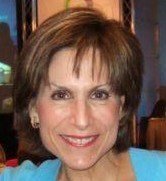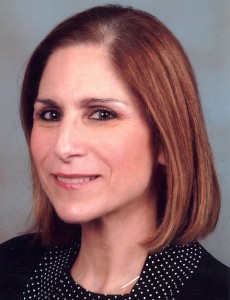- Don’t Fall Short
of Your GoalOr…. It could be hard to
get back on program…
Through my years of coaching, I have found that for those clients who take a break from the program or stop short of their goal have a hard time getting back on program. Why? One reason may be that they don’t recalculate where they are right now. So many times people think they will just get started like they did before and find they don’t have the same motivation as they once had. The reason may be that they have already changed, they are not in the same place as they were when they first got started. They weigh less, have less aches and pains, people are telling them they look good, etc. Yesterday is yesterday, and today is today!
Before getting restarted, you need to know your current reality. If you don’t know where you are, then you can’t plan ahead and make new goals for yourself. There should be some tension between where you are and where you want to go; this will give you the “why” to keep you focused and help you stick to your program no matter what. Next, write out all the actions you will need to do in order to reach your goal. Decide that you will do these actions no matter what happens. Make the decision that nothing is more important than your health.
Please get Dr. A’s book, Dr. A’s Habits of Health and its companion guide (go to http://maryjanemedlock.com and click on Shop Online or simply ask me to order it for you). It is necessary! The first seven chapters will get you geared up for success! The rest of the book teaches you how to live healthy for the rest of your life.
I think most of you have the book…I wouldn’t be telling any of you to do this if I didn’t do it myself… so lets all start reading Chapters 1 thur 7 and we are going to talk about this in the group and on this blog. I realize that the answer to Optimal Health is right in our hands..:D)
LURKERS come out come out whereever you are :D)
Health and Happiness! MJ
Mary Jane Medlock
TSFL GLOBAL DIRECTOR – 972-617-5094
Archive for the ‘Topics’ Category
Don’t Stop Short of Your Goal!!
Sunday, July 18th, 2010Walk for Good Health
Tuesday, June 2nd, 2009
 Walk for Fitness
Walk for Fitness
Did you know that walking and running are the quickest ways to blast up to 25% more calories boost your energy instantly and sculpt lean muscles? You don’t need to invest a lot of money to walk, other than a good pair of walking or running shoes. You can do it any time, as often as you like! Walking will help you continue to lose weight and feel great! How can you get the most out of your walk? Follow these helpful tips….
1. Watch Your Stride. Lean into each stride will increase momentum and will help you go faster. How far you lean will depend on you and the pace you want. If you are walking you will hinge forward from the hips. If you are running, the lean starts with your ankles. Lean during your whole walking experience. It should feel almost as if you will fall forward if you don’t take another step.
2. Use a Pedometer. They can be purchased for 10-30 dollars but are worth their weight in gold! Wear it all day!
3. Tighten your Abdominal. You want to be aware of your “core” or center, so remember to keep your abs tight throughout your walk or run.
4. Flex your Toes. You will recruit more leg muscles and propel yourself to go faster if you pull your toes up.
5. Bend your Elbows. By bending your elbows 90 degrees and keeping them close to your body while swinging from your shoulders, you will move faster.
6. Push Yourself. Challenge yourself to walk at a fast clip. You should huff and puff but be able to carry on a conversation. It’s OK to be a little breathless as you talk.
7. Add Music. Have your I-Pod join you on your walk/run. Rev up your performance by adding fast paced, up beat tunes! It could also help to reduce stress as you run. Check out the top 100 Workout songs at fitnessmagazine.com
8. Choose Hills over Flats. You can increase the amount of calories burned by choosing a walk with some incline in it. This will also strengthen your butt and leg muscles. When walking on an incline remember to lean forward and shorten your steps and pump your arms.
9. Add Weight. You could hold low weight dumbbells, wear ankle weights or a weighted vest. This will increase calories burned for time spent exercising. Remember to start out slow and low to reduce injury.
10. Take a Hike! Walking in the woods will burn about 500 calories/hour. If you carry a backpack, it will be even more!
Essentials for Your Walk
1. Splurge on a great pair of walking/running shoes
2. Invest in a Pedometer
3. A watch to time your walks
4. Warm workout gear (hat, gloves, shell, warm-ups if cold weather).
5. Fanny pack to hold water bottle (or shake)
6. Motivation to walk every day!!
Before You Begin…
1. Start small and focus on getting out the door.
2. Keep your exercise in your log
3. Remember to stretch before your walk/run
4. Remember to cool down after.
5. As your exercise length and intensity increases, so must your calories. On days that you work out hard and long, add an extra Medifast product to your day.
When does one actually burn fat?
Thursday, April 16th, 2009 Q: I heard that fat isn’t burned until 20 minutes into a cardio activity. A friend said fat is only burned when you exercise on an empty stomach. What’s the real deal?
Q: I heard that fat isn’t burned until 20 minutes into a cardio activity. A friend said fat is only burned when you exercise on an empty stomach. What’s the real deal?
Why Are YOU Overweight?
Wednesday, April 1st, 2009
You are overweight for the most simple of reasons — because you’re eating the wrong foods, the wrong types of calories per meal, and you’re also eating meals in the wrong patterns each day.
Think closely about what I am about to tell you, since it’s going to change the way you think about dieting…
THE ANSWER: Do you Medifast at the times you choose using the right intervals, but MORE IMPORTANTLY; CHOOSE the right foods for your meals. Careful not to over portion or under portion yourself… Watch the spices!! :D)
Weight Loss Plateaus
Saturday, March 28th, 2009
Mary Jane Medlock
Weight loss plateaus are complex and are caused by a variety of problems. Here are a few of the most common:
Tips to Overcoming the Plateau
Kg body weight x 24 = cals/day
Kg body weight x 23 = cals/day


